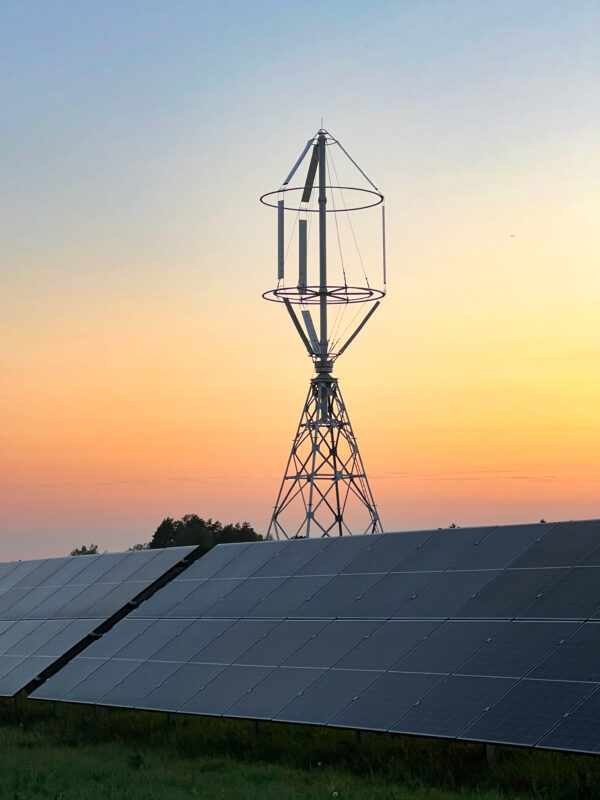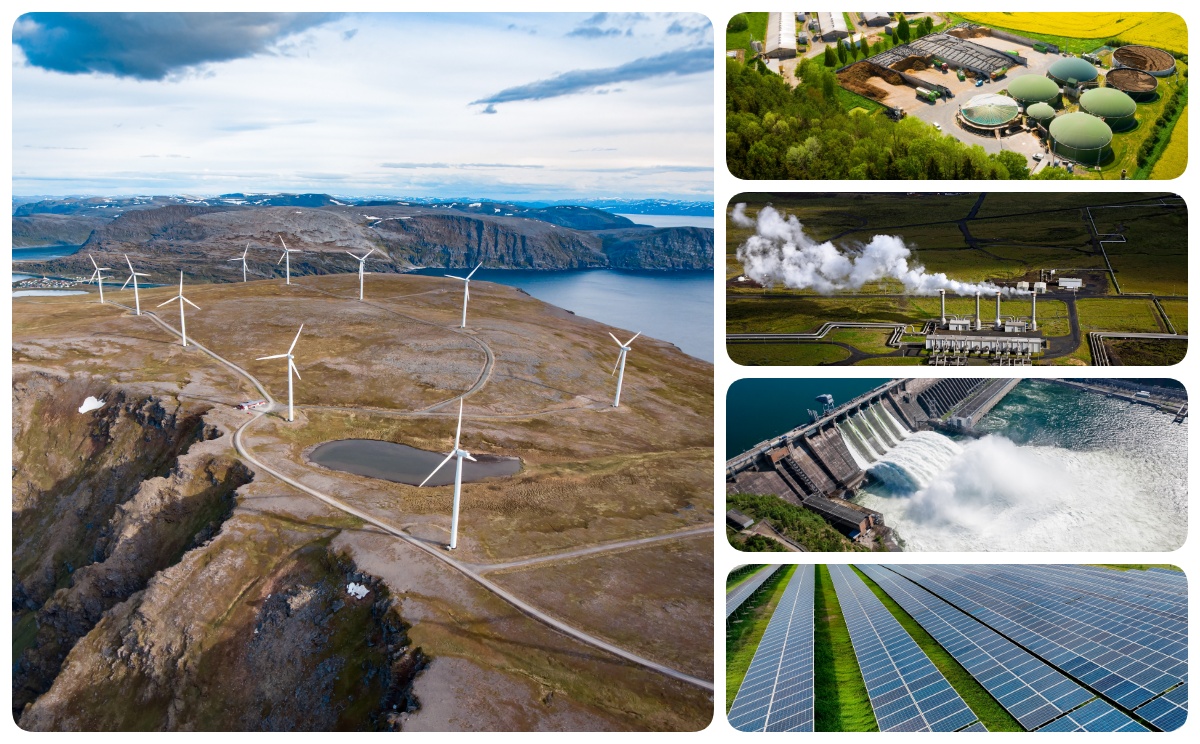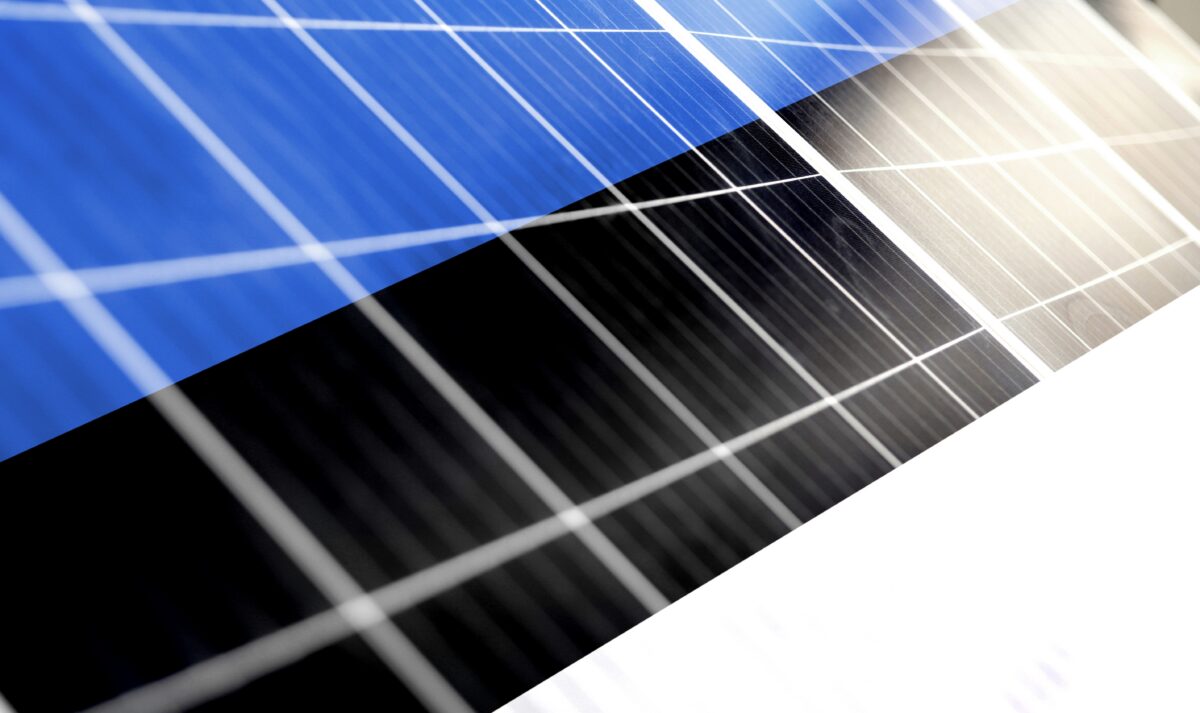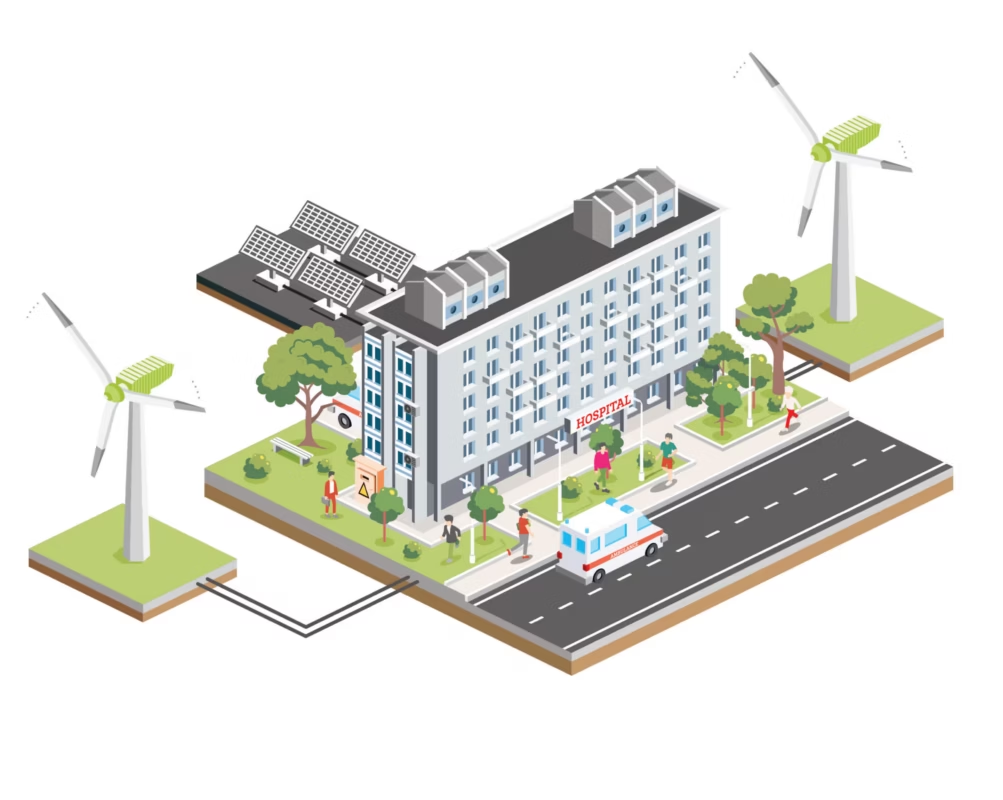As the world faces the urgent need to address climate change, the shift from fossil fuels to renewable energy has become a top priority. Fossil fuel energy production is responsible for roughly 75% of global greenhouse gas emissions, highlighting the critical need for sustainable alternatives. Renewable energy sources, like wind, solar, hydro, geothermal, and biomass, provide clean energy options that can power a low-carbon future and help us meet ambitious climate goals.
Each renewable energy source brings its own strengths and limitations, making them well-suited to different climates, geographies, and energy needs. For example, solar power offers vast potential in sunny regions, while hydroelectric power has become a backbone for areas with abundant water resources. Wind energy, both onshore and offshore, continues to expand as technology improves, and geothermal provides consistent power in geologically active regions. Biomass, too, adds a renewable element by converting organic materials into fuel, although with unique considerations around sustainability.
In this article, we’ll explore and compare these renewable sources, discussing how each technology contributes to energy production, the specific advantages and challenges they present, and the roles they can play in reshaping our energy mix.
Understanding Renewable Energy
Renewable energy sources like sunlight, wind, water, and organic materials are abundant, sustainable, and offer a cleaner way of producing energy compared to finite fossil fuels. Not only do renewables provide power without depleting the Earth’s resources, but they also reduce greenhouse gas emissions, helping combat climate change while encouraging energy efficiency and independence. Investing in these diverse sources also helps with economic growth and new job opportunities.
Each type of renewable energy has its strengths and ideal conditions, allowing us to tailor energy solutions to specific geographies and climates. Wind power, for example, harnesses natural wind through turbines, generating power both onshore and offshore. Solar power captures the sun’s energy via solar panels or through solar thermal systems, even enabling electricity production after sundown. Hydropower takes advantage of flowing water, typically by directing it through turbines in a dam to generate electricity. Geothermal energy taps into the Earth’s internal heat, providing a reliable and constant energy source in specific regions. Finally, biomass, or biofuels, created from organic materials like agricultural waste, food scraps, and animal manure, has been used for centuries and remains a versatile fuel source today.
Understanding the unique benefits and challenges of each renewable energy source—whether wind, solar, hydro, geothermal, or biomass—is essential as we build a resilient, sustainable energy system for the future. That is why we present a renewable energy comparison.
Wind Energy vs. Solar Energy
Efficiency
When it comes to wind power its efficiency of course depends on wind speed, but also turbine design. While the first aspect is out of our hands, choosing the right wind turbine ensures that our installation will reach its maximum efficiency. Usually, wind turbines can reach around 35-40 % of its efficiency. Of course, in regions with strong winds, that percentage can be higher. For example offshore wind farms, because of their locations (ocean or sea) are a lot more efficient than the turbines on the mainland.
On the other hand solar panels produce energy by converting sunlight through photovoltaic cells. The efficiency of solar power depends not only on sunlight in the region but also on the quality of the panels. Usually that efficiency ranges between 15-25%. New technologies and multi-junction solar cells may reach an efficiency of even 40%.
Cost
The cost of both small wind turbines and big installations has gone down in recent years. This type of energy is more cost-effective than for example solar energy, especially in areas with strong, consistent wind. While the upfront cost may be higher than that of panels (but not in every case), wind turbines not only have lower maintenance costs but also longer lifespan. They also produce more energy.
Do you want to learn more about small wind? Contact us today for a free feasibility study and learn about wind potential in your area.
Environmental Impact
When it comes to environmental impact, wind energy has good parameters. The process of producing energy from wind turbines means zero added greenhouse gas emissions or air pollutants.
Of course, manufacturing the turbines themselves does require some materials and resources, meaning wind power has some carbon footprint. Also, the blades pose some risk to birds and bats, but it’s low compared to other infrastructure.
Solar power also has a low impact on the environment. The panels don’t produce any emissions while they produce energy. Their impact on the environment is similar to that of wind energy because the only carbon footprint they leave occurs while they are produced and installed. What is different is that solar power doesn’t impact local wildlife.
Versability
Wind turbines are very versatile when it comes to location. They are a good solution both for rural areas, as well as cities, and work both onshore and offshore. Due to the range of turbine sizes available, wind energy can serve a variety of purposes, from residential to commercial and renewable energy for businesses. They can be installed both on water, as well as buildings, gardens, and fields.
The situation looks similar with solar panels. They also can be installed on rooftops, in gardens, and in more rural areas. The only difference is so far solar panels haven’t been used on a large scale on water.
In our offer, you can find small wind turbines that will work perfectly both for residential purposes, as well as a solution for businesses. Our vertical-axis wind turbines have many applications, both in rural and urban areas.

Geographical Dependence
The wind is not a completely reliable source of power. There will be times when the wind is not consistent or strong enough. There are whole regions where wind turbines are not a very efficient way of producing energy. Of course, the same can be said about solar energy. Both sources of energy must be located in areas with proven winds or sunlight to reach maximum efficiency.
In the case of wind turbines energy storages, such as batteries, allow for access to power during days or weeks with weaker winds. The same can be said for solar panels. The biggest difference is the night-time – wind turbines can produce energy day and night in the right conditions, while solar panels located even in the most sunny place will only produce energy during the day.
Discover the best renewable energy solution for your business needs. Schedule a meeting with our company to explore how wind energy stands out.
Hydroelectric power
Hydropower, or hydroelectric power, remains the dominant force in renewable electricity generation, producing more power worldwide than any other renewable source, and is expected to hold this position well into the 2030s (when it’s predicted to be taken over by wind and solar power). Harnessing the natural flow of rivers, hydropower operates by capturing energy from the water cycle, an endless and renewable process. By using dams or diversion structures to control water flow and generate electricity, it achieves an impressive efficiency rate of about 90%. This high efficiency stems from the ability of hydropower plants to convert almost all the potential energy of water flow into electricity, especially in regions with favorable topography and abundant rainfall.
While the process of building dams and other needed installations is a very big investment, hydropower has relatively low costs during its lifespan, which is also very long compared to other renewable energy systems.
Despite its efficiency and flexibility in meeting electricity demands during peak times or outages, hydropower comes with some environmental costs. Building dams for hydropower can disrupt fish migrations, permanently flood ecosystems, and even contribute to methane emissions when vegetation decays underwater. While hydropower doesn’t create thermal pollution, it is vulnerable to drought and reduced water levels, making it a more location-dependent renewable source. Still, hydropower offers unique advantages by providing additional benefits like flood control, irrigation, and even drinking water supplies. These benefits, combined with its reliability and efficiency, keep hydropower at the forefront of renewable energy, especially in areas with suitable landscapes.

Geothermal Energy
Geothermal energy taps into the heat stored deep within the Earth’s crust, offering a consistent and renewable power source that stands apart from other renewables because it isn’t reliant on the weather. Wells drilled into geothermal reservoirs bring this thermal energy to the surface, where it can be used for electricity generation, district heating, or industrial processes. A key advantage of geothermal energy is its ability to provide steady, round-the-clock power, helping stabilize electricity grids by complementing the variability of sources like wind and solar. When used for heating rather than electricity, geothermal systems are especially efficient, delivering energy directly without conversion losses.
For electricity generation, however, geothermal relies on medium- to high-temperature resources typically found near tectonically active areas. This dependency can make it region-specific, but when available, geothermal plants operate with high-capacity factors, reliably generating power year-round. Geothermal systems generally have an efficiency between 10% and 20% due to temperature limitations, yet their capacity for uninterrupted, dispatchable power becomes increasingly valuable as wind and solar contributions rise.
Despite its advantages, geothermal energy faces several challenges, including high initial costs, technical complexities, and the need for specialized geological knowledge and skilled labor. While these hurdles can limit its deployment, geothermal energy’s unique characteristics make it a crucial part of a diverse and resilient renewable energy mix.
Biomass
Biomass energy is generated from organic materials like trees, agricultural crops, and waste from forestry or agriculture, as well as the biodegradable portion of municipal waste. It offers a moderate yet useful addition to the green technology mix.
This renewable energy source can be harnessed for heating, electricity production, and even as a fuel for transportation. If we were to dedicate all available arable land to bioenergy crops, it would still cover less than half of today’s global energy demand. Nonetheless, biomass can often be produced economically and, in certain applications, can even help remove carbon from the atmosphere when combined with carbon capture and storage technology.
Biomass energy is not as efficient as other renewables, with conversion rates from organic material to electricity at around 20% to 25%, largely due to energy losses during combustion and conversion. Still, biomass offers versatility, with applications spanning from small-scale heating to large-scale power generation. It can be a practical, complementary energy source, particularly when sourced sustainably and used in a way that minimizes environmental impacts, adding yet another option to our renewable energy toolkit.
Wind Energy Advantages and Disadvantages: Conclusion
While each renewable energy source presents unique benefits and potential, wind power stands out as one of the most promising for the future. It has already seen rapid advancements in technology, cost reductions, and efficiency, particularly in regions with consistent wind conditions. Unlike hydropower, which relies heavily on specific geographic features and can impact local ecosystems, wind energy can be deployed more flexibly across diverse landscapes, including both onshore and offshore environments. Though hydropower currently leads in global renewable energy production, wind power’s growth trajectory suggests it could soon surpass hydro as the leading renewable energy source worldwide. As wind energy continues to scale and improve, it promises to become a cornerstone in the transition toward a cleaner, more sustainable energy future.






